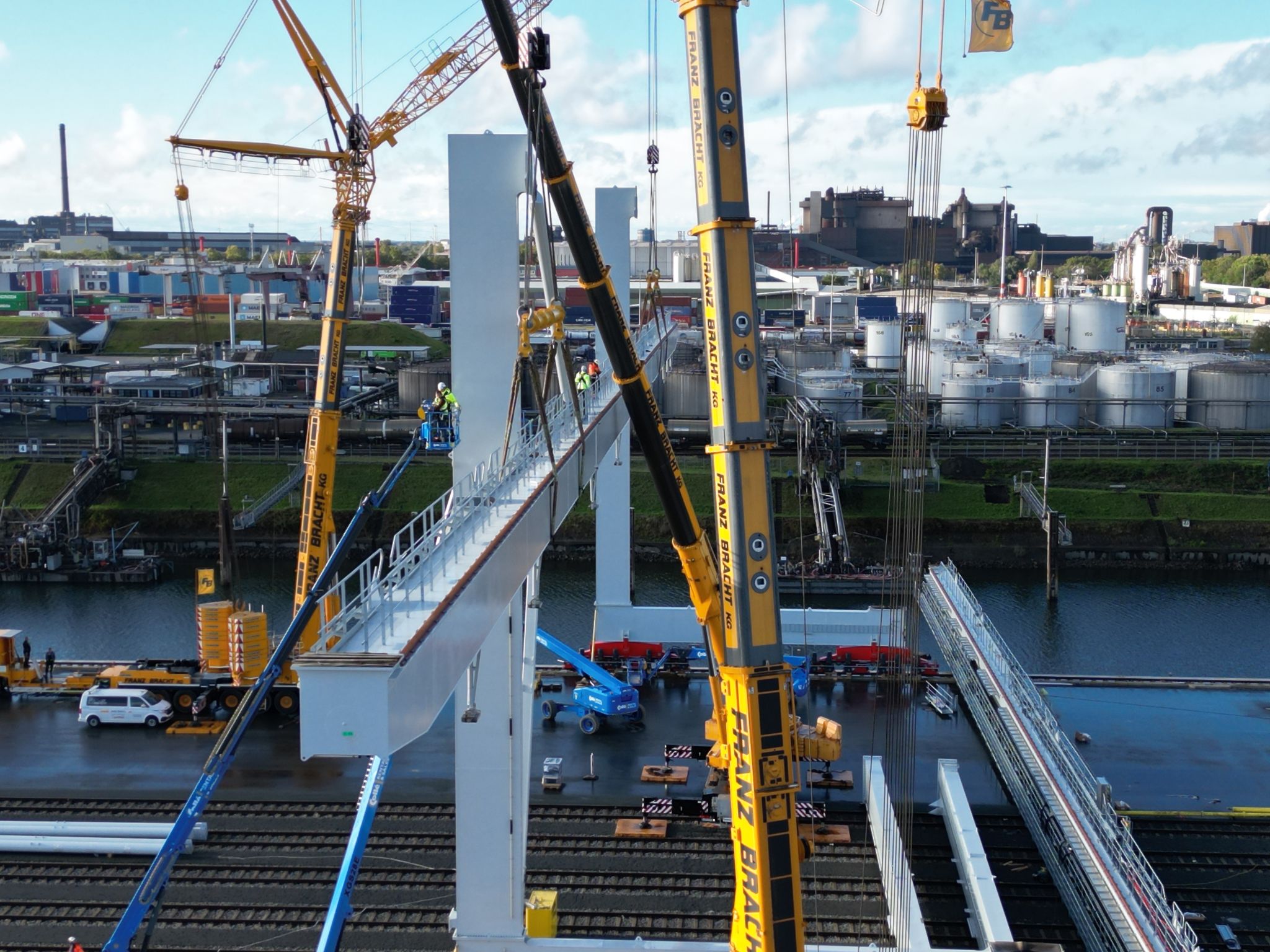Duisburg Gateway Terminal: crane system is being implemented

The Duisburg Gateway Terminal (DGT), which will be the largest inland terminal in Europe, is gradually taking shape. The crane system is currently being implemented, with the first girder already moving on the terminal’s six rail tracks and a second one currently being added.
According to Duisport, this is the first significant stepping stone for the DGT project. “In the first stage of expansion, three cranes will be in use on the DGT: two at dock A, one at dock B”, the company mentioned on LinkedIn. The terminal will be built on the Coal Island of the German port over an area of more than 220,000 square metres.
In total, there will be six cranes, twelve rail freight platforms of 730 metres each, five loading zones, three berths for barges, and an area of 60,000 square metres for container storage. The first construction phase should be completed by the first quarter of 2024. Once the terminal is ready, it should be able to accommodate containers weighing up to 43 tonnes.

PSA replaced COSCO as one of DGT’s shareholders
The DGT project was launched in 2019 involves big companies from all over the world. The initial plan was to have Duisport and COSCO funding 30 per cent each and Dutch inland shipping group HTS and Hupac equally splitting the remaining 40 per cent. However, COSCO decided to pull out of the deal last October after the Chinese giant became shareholder of another German terminal, the Container Terminal Tollerort in the port of Hamburg. COSCO was replaced Singaporean group PSA International last July.
Also read:




